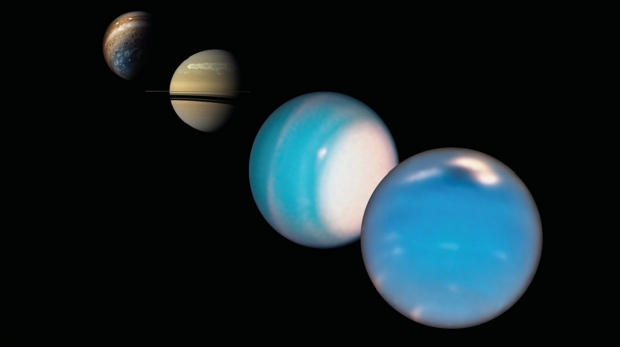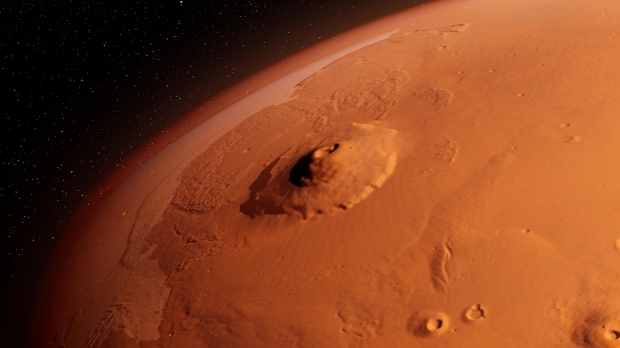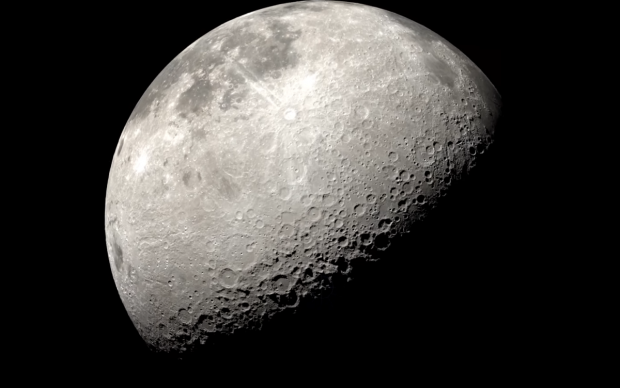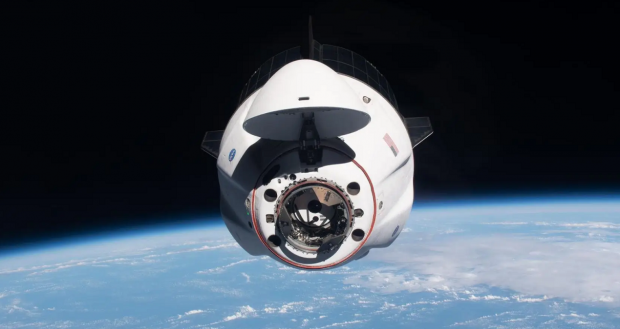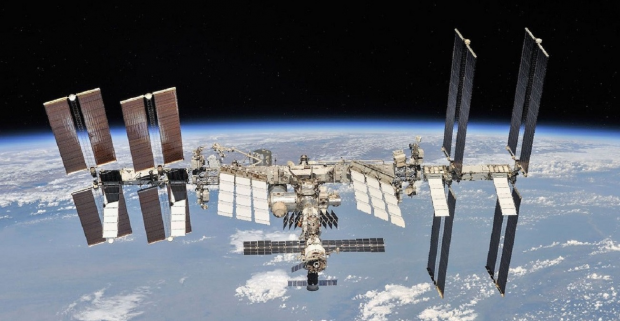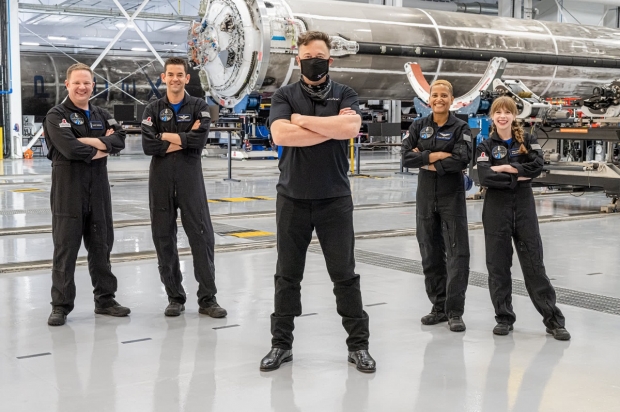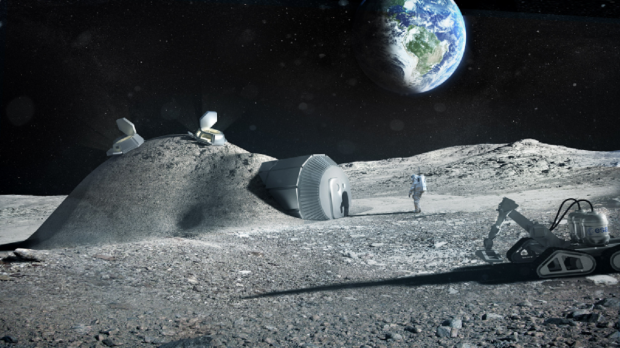Science, Space, Health & Robotics News - Page 273
Jupiter's atmosphere may have solved a mystery with Uranus and Neptune
A new study suggests that Jupiter's atmosphere contains the answer to a long-standing mystery with Neptune and Uranus.
According to a study by Tristan Guillot, the mystery of why Neptune and Uranus lack ammonia in their atmospheres when compared to other gas giants may have just been answered. Guillot suggests that mushballs are what is responsible for the lack of detection. Mushballs are large hailstones that can contain large amounts of ammonia and water.
Guillot suggests that these mushballs form in the atmosphere and then carry the ammonia down into the thick atmospheric clouds and below the layer our instruments can detect. The basis of this theory was founded on a discovery that occurred on Jupiter. Researchers used NASA's Juno spacecraft that's orbiting Jupiter to observe ammonia hailstones forming when storms were occurring. These hailstones carried ammonia deep into Jupiter's atmosphere.
Continue reading: Jupiter's atmosphere may have solved a mystery with Uranus and Neptune (full post)
There may just be a simple reason why Mars doesn't have surface water
A team of researchers have published a new study that provides evidence that the size of a planet may be a determining factor in whether it will be able to contain water for extended periods of time.
The new study has been published in the journal Proceedings of the National Academies of Sciences and provides evidence that the size of a planet impacts habitabilty. The researchers looked at 20 meteorites that are representative of Mars' overall composition and measured the amount of potassium (K) isotopes that are within them.
Using K as a tracer for more "volatile" elements and compounds, the researchers were able to find correlated evidence that suggests that smaller planets lose lots of water during formation and that global magnetic fields shut down, which eventually causes the atmosphere to thin. Mars is an example of this.
Continue reading: There may just be a simple reason why Mars doesn't have surface water (full post)
NASA will hunt for water on the Moon in 'permanently shadowed areas'
As part of its Artemis program, NASA will be sending a lunar reconnaissance rover to the surface of the Moon to search for water.
In a new press release published on the NASA website, the space agency details the Volatiles Investigating Polar Exploration Rover (VIPER) and where it plans on landing it. According to the press release, SpaceX will be delivering VIPER to the Nobile Crater located at the Moon's South Pole. NASA selected this landing location with several parameters in mind, and those were; suitable terrain for the rover, temperature variation, solar charging locations, and presence of water-ice.
The Nobile Crater is the most viable location for VIPER to land, and once it arrives in 2023, it will begin to explore a region of the surface that is approximately 36 square miles. Throughout its 100 day mission, NASA expects VIPER to traverse 10 to 15 miles of its landing area, exploring areas NASA researchers have been carefully assessing with data from remote sensing instruments. VIPER's main mission is to search for water-ice, and NASA believes that ice and other resources exist in "permanently shadowed areas of the Moon near the poles."
Continue reading: NASA will hunt for water on the Moon in 'permanently shadowed areas' (full post)
NASA moves closer to getting people to 'work, play and live' in space
NASA has announced a new contest where it will review proposals from private companies for the construction of new space stations in Earth's orbit.
The space agency has said that the International Space Station is expected to be retired by the end of the decade, and instead of constructing a new space station itself, NASA is giving the opportunity to private companies. By doing this, NASA expects to save around $1 billion per year. According to Phil McAlister, NASA's director of commercial spaceflight, NASA has already received "roughly about a dozen proposals" from private companies, with 50 companies in total expressing interest in the new program.
Under the Commercial LEO Destinations project NASA will award two to four companies with the best proposals up to $400 million in contracts. McAlister added, "This strong industry response shows that our plan to retire the International Space Station in the latter part of this decade and transition to commercial space destinations is a viable, strong plan. We are making tangible progress on developing commercial space destinations where people can work, play and live."
Continue reading: NASA moves closer to getting people to 'work, play and live' in space (full post)
NASA plans to spend $400 million on two new private floating labs
NASA is has announced that it's willing to award private companies up to $400 million to construct private space stations in Earth's orbit.
The space agency is looking towards the future of how humans are going to be conducting science in microgravity, and so far, all of the research has been coming from the International Space Station (ISS). However, the ISS won't last forever, and it was only recently that astronauts aboard the floating laboratory reported new cracks in one of the modules, more on that here.
Instead of NASA constructing its own new ISS, it is putting the job up for offer with private companies. According to NASA's commercial-spaceflight director, Phil McAlister, who spoke to a CNBC reporter, the new $400 million program has "received roughly about a dozen proposals". Of NASA's proposals from private companies, the space agency will select two to four winners and divide the $400 million budget between them.
Continue reading: NASA plans to spend $400 million on two new private floating labs (full post)
Astronomers find what was left over from a rare explosion in 1181
Astronomers have detailed in a new study what the bright cosmic object was that lit up the sky over Japan and China back in 1181.
Historians and astronomers have been attempting to find an answer for what contemporary astronomers recorded seeing in the sky in 1181. According to accounts from these astronomers, onlookers of the sky saw a bright light that resembled the same brightness level as Saturn.
This bright light remained in the night sky for six months, according to historical accounts of the event. Now the mastery of the bright light in the sky may be uncovered as a new study has tracked a cosmic event back to around 1181.
Continue reading: Astronomers find what was left over from a rare explosion in 1181 (full post)
Researchers build holograms you can feel, StarTrek-level tech in sight
A team of researchers has created holograms that users can actually feel, which very well may be the first step towards StarTrek-level technology.
The team of researchers is from the University of Glasgow, and according to a report by researcher Ravinder Daahiya written in The Conversation, the team uses a technology called "aerohaptics". So, how does it work? Users of the hologram are blasted with jets of air, or "aerohaptics," which simulate the sensation of touch on people's fingers, hands, and wrists.
Daahiya explains that the team of researchers tested the jets of air with an interactive projection of a basketball. Daahiya says that the system provided the appropriate amount of simulated weight to the basketball, causing the overall experience to be quite convincing. Daahiya wrote, "Those jets of air deliver a sensation of touch on people's fingers, hands, and wrists."
Continue reading: Researchers build holograms you can feel, StarTrek-level tech in sight (full post)
Elon Musk slaps $50 million down after Inspiration4 crew returns home
The Inspiration4 crew arrived safely back on Earth this past Saturday with SpaceX's Dragon capsule touching down safely in the Atlantic Ocean
The crew of four ordinary people were up in lower-Earth orbit for three days, and throughout that time the crew enjoyed some music, did science experiments and enjoyed an incredible view at Earth from Dragon's cupola. Jarrad Isaacman, the sponsor and commander of the mission wanted to raise money for St Jude Children's Research Hospital. Isaacman reportedly paid SpaceX an undisclosed amount of money for the trip, as well as gave $100 million to St Jude Children's Research Hospital.
As a welcome home present, SpaceX CEO Elon Musk counted himself in for $50 million to be donated to the St Jude Children's Research Hospital. Musk dropped the welcoming him present on a tweet from the team that said they are back on Earth and are "Happy. Healthy. Home." SpaceX mission control said when the Inspiration4 Crew was landing, "On behalf of SpaceX, welcome back to planet Earth. Your mission has shown the world that space is for all of us."
Continue reading: Elon Musk slaps $50 million down after Inspiration4 crew returns home (full post)
Rolls-Royce to power Moon and Mars mining with nuclear reactors
Rolls-Royce is currently working on a power source for mining resourcing on the Moon and even Mars.
The firm recently released a joint study with the UK Space Agency into nuclear reactor development for space rockets and mining. The firm is taking a look at how a micro-nuclear reactor could be implemented into a rocket and then redeployed as a power source for mining on the Moon and mining on Mars. The head of Rolls-Royce's defense division, Dave Gordon, said that the firm can utilize its 60-years of development experience making nuclear-powered submarines for the Royal Navy and apply it to nuclear rocket/space mining development.
Gordon said rockets and submarines are similar in the following ways, "non-air breathing environments, long-endurance, super reliable with a very dense power source." Gordon goes on to say that there aren't very many rare metals on Earth and that other objects in space have an abundance of these metals. Mining these metals will require a power source, and Gordon argues that the power source will have to be nuclear and not solar. For more information on this story, check out this link here.
Continue reading: Rolls-Royce to power Moon and Mars mining with nuclear reactors (full post)
Elon Musk laughs at President Biden, after all-civilian SpaceX mission
SpaceX has just successfully made history with their Inspiration4 mission, raising $210 million for St. Jude Children's Research Hospital, and sending four civilians into space.
Elon Musk wasn't happy about the news, with someone tweeting him asking: "The President of the United States has refused to even acknowledge the 4 newest American astronauts who helped raise hundreds of millions of dollars for St. Jude. What's your theory on why that is?"
The Tesla and SpaceX founder tweeted back, simply saying: "He's still sleeping".
Continue reading: Elon Musk laughs at President Biden, after all-civilian SpaceX mission (full post)


